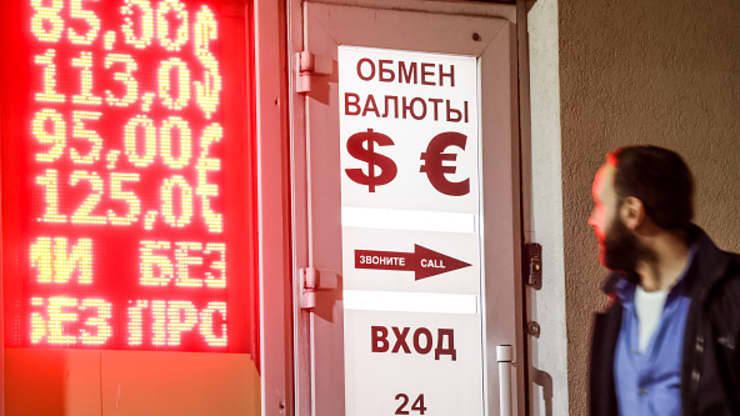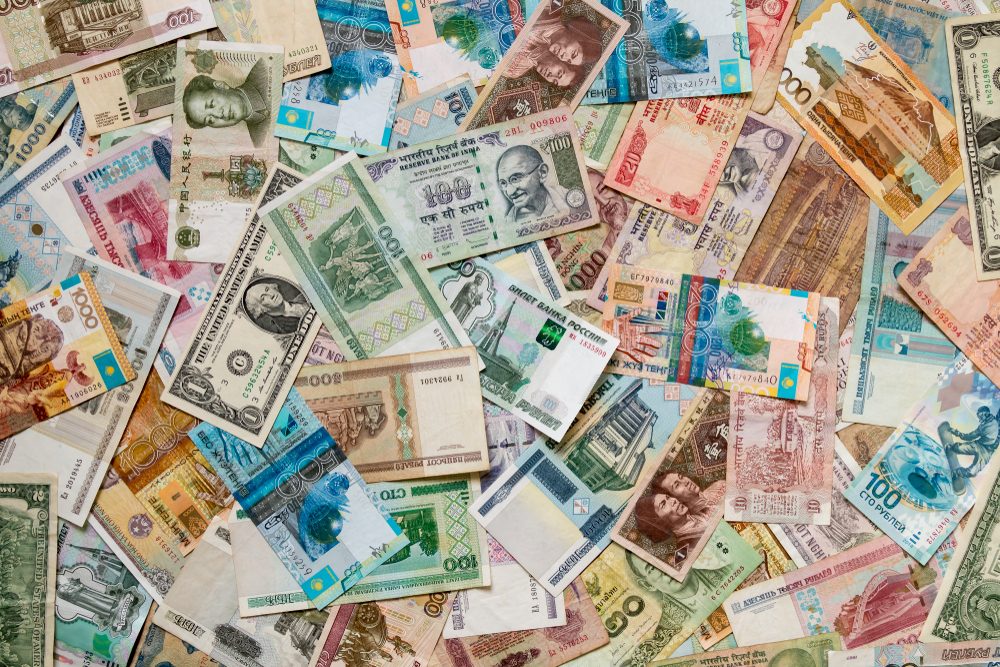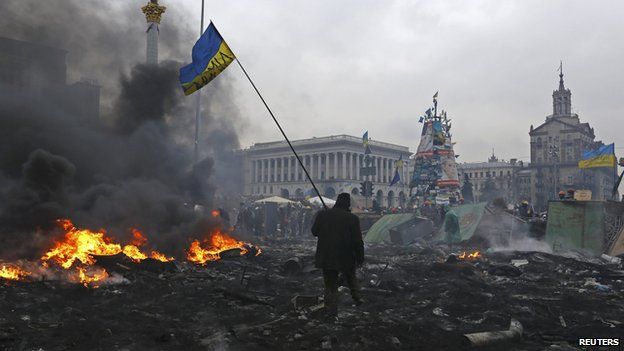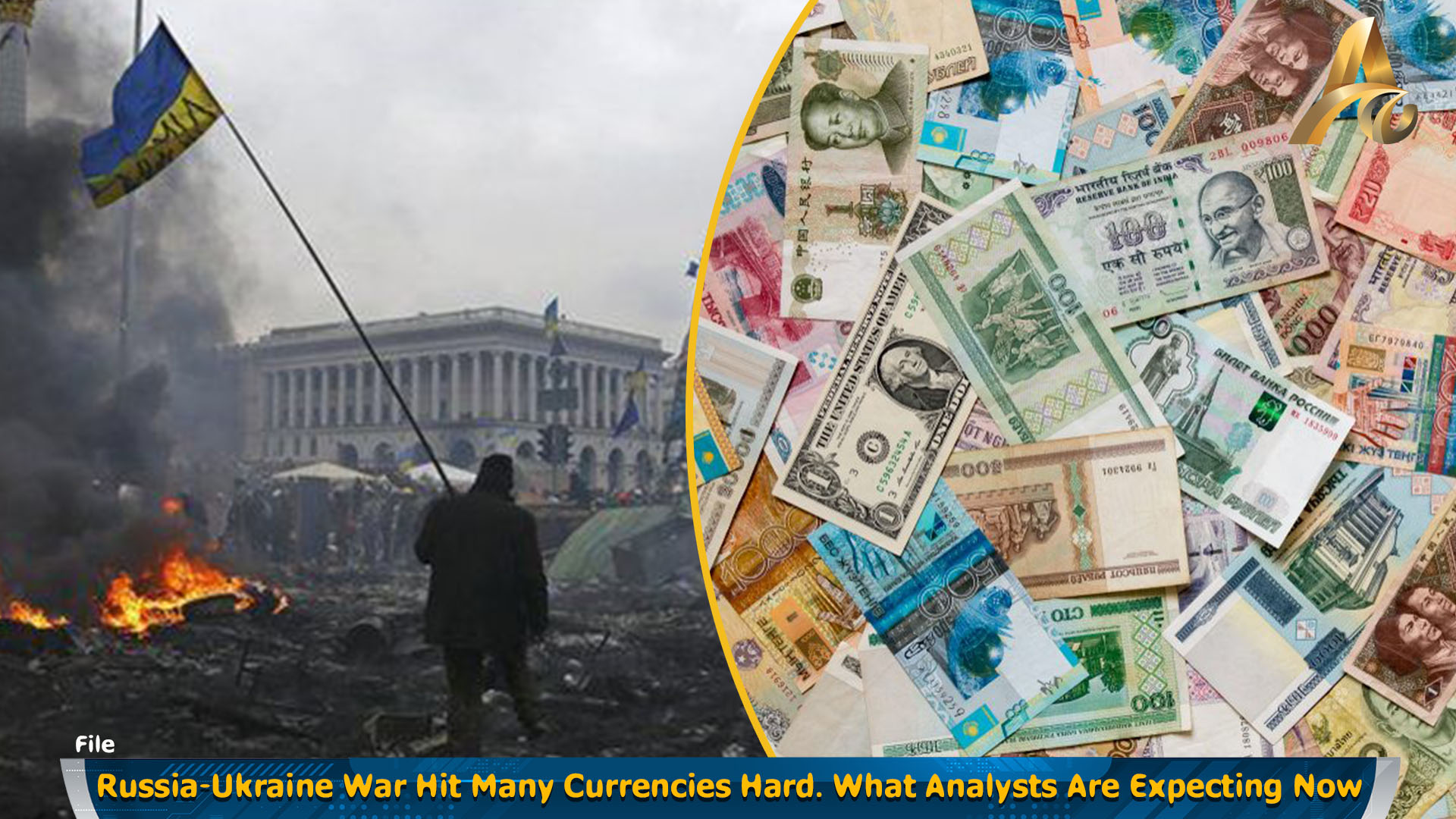LONDON : Currency markets have not escaped the steep losses and wild swings seen across other asset classes in recent weeks, and strategists are changing their game plans in light of Russia’s invasion of Ukraine.
The Deutsche Bank Currency Volatility Index climbed toward 10% on Tuesday morning in Europe, its highest level since April 2020, in the early stages of the Covid-19 pandemic.
The euro gained 0.4% against the dollar on Tuesday as some of the flights to safe-haven assets moderated, but was still down more than 4% against the greenback since the war began, as the conflict intensified and focus switched to the looming threat to European energy supplies. The common currency slid more than 1% on Monday to conclude its largest three-day slide since March 2020.
Euro slide
In a note Friday, Goldman Sachs co-heads of global FX, rates, and EM strategy, Zach Pandl, and Kamakshya Trivedi said the Wall Street giant’s constructive outlook on the euro was now off the table as long as the military conflict continues.
Goldman’s models suggest that the downgrade to growth expectations across the eurozone subtracted around 1% from the EUR/USD currency pair last week, while an increase in the Europe-wide risk premium – the extra returns an investor can expect for taking on more risk – was worth almost 4%.
“Despite the sharp fall in EUR/USD, these models suggest the currency should be trading somewhat lower—around 1.07-1.08—given the moves in other market variables,” Pandl and Trivedi said.
Although they noted that estimates should be approached with caution, the models suggested that the euro is relatively strong against the Polish zloty (PLN), Swedish krona (SEK), U.S. dollar (USD), Hungarian forint (HUF), and British pound (GBP), while somewhat weak against the Swiss franc (CHF).
“In our view, this suggests that EUR/USD and EUR/GBP are the most appropriate crosses for new hedges for Ukraine-related risks,” the strategists said, noting that EUR/CHF has been highly responsive to Ukraine developments thus far, owing to the Swiss franc’s status as a traditional safe haven.
However, the risk of the Swiss National Bank intervening to halt the currency’s appreciation has “likely risen now,” they added.
The military conflict cast broad uncertainty over the region’s macroeconomic outlook, but Pandl and Trivedi suggested that even if spillovers damage the euro area’s growth prospects, it would not necessarily result in sustained euro depreciation, as the European Central Bank may worry about the impact on inflation, while governments may respond to the crisis with fiscal easing.
“Moreover, if Euro Area growth holds up reasonably well and the ECB remains on track to raise rates this year, we would still see a bullish structural outlook for the currency,” they said.
“For now, we stay on the sidelines in EUR crosses while we await more clarity on the unfolding geopolitical crisis.”
BMO Capital Markets noted that the smaller downturn in the euro compared to other European currencies is partly due to the high level of liquidity in the EURUSD exchange rate.
“The backdrop points to a period of less inward investment into Europe from abroad, weaker economic growth due in part to rising inflation, and a further deterioration in the trade balance due to the high price of oil,” BMO strategists said.
“Therefore, we wouldn’t judge the move in EURUSD as being over-extended yet from a fundamental perspective.”
Ruble and Eastern Europe
The Russian ruble has lost more than 64% to the dollar year-to-date to reach a record low, in large part due to the surprising severity of western sanctions imposed on Russia and its financial system, which aimed to isolate Moscow from the global economy.
Central to the size of the decline last week, according to BMO, was the effective freeze on the Central Bank of Russia’s ability to use its masses of foreign exchange reserves, the majority of which were denominated in euros and held with EU banks.
The favorable starting point of Russia’s external position prior to the invasion, the lack of a full and immediate ban on EU imports of Russian fossil fuels, and CBR’s doubling of the benchmark interest rate to 20% have somewhat mitigated the size of the move in USDRUB,” said BMO foreign exchange chiefs Greg Anderson and Stephen Gallo.
“However, we cannot be sure that the screen price for USDRUB reflects the true price that Russian citizens and businesses might be forced to pay for USDs if they were to attempt to liquidate their RUB now.”
Russian stock markets have been closed for the past week and are expected to remain so at least through Tuesday. While the global foreign exchange market is not formally closed to ruble trading, BMO said the sanctions have rendered the currency “highly illiquid.”
Alongside the ruble, the currencies of former Soviet satellite states have also plunged, with PLN, HUF and Czech koruna (CZK) down between 8-12% since the days leading up to the invasion.
BMO suggested the magnitude of the moves indicates capital flight from these currencies.
“This capital flight is likely coming from both worried local citizens as well as global investors. Liquidity in these currencies is extremely poor, which leaves room for volatility to persist,” Anderson and Gallo said.
“Poland is the #1 destination for Ukrainian evacuees and it is a key part of the network of supply routes whereby goods and arms are being transported into Ukraine, so PLN seems particularly vulnerable to volatility and disruptions depending on how the war progresses.”

























